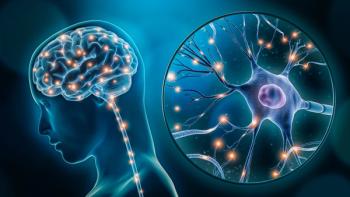
What’s Perfusion Got to Do With It?
Key Takeaways
- Brain SPECT imaging identifies perfusion abnormalities, guiding treatment decisions for refractory bipolar depression.
- Combination therapy with TMS and ketamine achieves lasting remission in over 85% of treatment-resistant depression cases.
Combination therapy of TMS and ketamine could enhance brain perfusion and neuroplasticity.
Stubborn or difficult to treat bipolar depression presents a particular challenge in psychiatry, often defying conventional algorithm-driven treatment such as complex lifestyle changes, counseling, behavioral therapy, and medications. This article examines the case of a patient with refractory bipolar depression who failed to respond to the conventional algorithm over 2 years. By integrating measures of perfusion acquired by Brain SPECT imaging into the initial assessment, we illuminate how that technique provided actionable insights, which informed a newer treatment that directly targets the same disturbed perfusion.
Brain SPECT imaging is a cost-effective and clinically valuable tool for assessing cerebral perfusion, one of the few direct measures of neurophysiological state. In this case, initial SPECT imaging revealed significant perfusion abnormalities, which can be a signal that additional oral pharmacologic interventions will worsen the episode (
The imaging results suggested that a treatment path of external brain stimulation was a more appropriate therapeutic option. To avoid hospitalization and other adverse consequences associated with electroconvulsive therapy (ECT), we chose another form of brain stimulation that we call “combination therapy,” providing the patient with the benefits of high-intensity
This approach not only mitigated discomfort but also leveraged the complementary mechanisms of both interventions. While both TMS and ketamine-based treatments hold promise, in the clinic they are less impactful than we need.
TMS's Role
Low-frequency (1 Hz) TMS reliably increases cerebral perfusion and it typically induces inhibitory effects on cortical excitability.2-5
Improved perfusion enhances oxygen and nutrient delivery to neural tissue while facilitating waste removal, supporting recovery of regions affected by (neuro)psychiatric conditions. Its antidepressant impact is limited: "Evidence on its efficacy in the short-term is adequate, although the clinical response is variable."6 Over the short-term, TMS seems to lead towards remission in about 20% to 24% of chronic depression cases.7
Ketamine's Role
Ketamine acts as an NMDA-glutamate receptor antagonist, reducing excitatory neurotransmission and stabilizing overactive neuronal activity implicated in mood disorders. Additionally, ketamine promotes synaptogenesis and enhances neuroplasticity, contributing to its rapid antidepressant effects. It provides short-lived relief from dysphoria.8 The ketamine-based medications do not seem to offer long-lasting antidepressant effects: "The effects of ketamine lasted no more than one week after treatment and clearly disappeared after two weeks. Ketamine did, however, cause more [adverse] effects than placebo. The effects of esketamine were seen at 24 hours and could last up to 4 weeks with repeated doses."9
Combination Therapy’s Role
Integrated or coadministered TMS and ketamine reliably yields a lasting remission in over 85% of patients.10
Regarding our case study, after our patient's clinical recovery and consequent return to his own premorbid lifestyle, we acquired these images, which show a dramatic improvement of neurophysiologic state (
The combination therapy of TMS and ketamine potentiates the distinct impacts of the 2 separate constituents into an enhanced therapeutic outcome, particularly in individuals with varieties of treatment-resistant depression.11,12 We propose that increased perfusion is the common theme for assessment and treatment.
Mechanism of Action: TMS
Approximately 1 Hz TMS has been shown to increase regional perfusion, contributing to its therapeutic effects by enhancing neurovascular support.2,3 An increase of perfusion in deficient areas hypothetically not only aids in nutrient delivery but also should facilitate the removal of metabolic byproducts, potentially supporting brain function and recovery in areas affected by neuropsychiatric conditions.
The effects of TMS on cortical excitability depend on parameters such as the frequency and site of stimulation. For example, 1 Hz TMS is recognized for its ability to induce inhibitory effects on certain brain regions, effectively reducing cortical hyperactivity often seen in neuropsychiatric conditions like clinical depression.4,5
Mechanism of Action: Ketamine
Perfusion. The antidepressant response to ketamine is associated with perfusion changes in reward-system regions, specifically ventral basal ganglia and medial prefrontal cortex.13
NMDA-glutamate receptor antagonism. Ketamine antagonizes the NMDA-glutamate receptor, which results in decreased excitatory neurotransmission.14 The reduction in pathological excitability is believed to aid in the resetting of dysfunctional neural circuits involved in depression.15
Neuroplasticity. The acute antidepressant effects of ketamine are also linked to its promotion of synaptogenesis and enhancement of neuroplasticity. Ketamine has been shown to increase synaptic connections and improve neural plasticity, which can help restore healthy neural connectivity and function. These neuroplastic changes are thought to underpin the quick improvements in mood and cognitive function seen in patients with depression.14,16
Taken as a whole, the findings underscore the potential of both TMS and ketamine as innovative treatments for aspects of depressive illness. Each modality works through distinct yet complementary pathways to modulate brain activity and improve mental health outcomes.
Possible Mechanism of Action of Combination Therapy
Plasticity and tissue recruitment. The increased perfusion from TMS hypothetically supports the synaptic changes and tissue recruitments induced by ketamine, facilitating more effective and long-lasting neural circuit remodeling. TMS is already used to induce plasticity, which serves to facilitate more effective and long-lasting neural circuit remodeling.17 The improvement of aberrant focal perfusion by TMS may serve to reinforce the synaptic changes, tissue recruitments, and alterations of perfusion induced by ketamine.13
Synergistic modulation. By combining TMS's ability to increase perfusion and to modulate cortical activity and connectivity with ketamine's rapid modulation of excitatory neurotransmission and promotion of neuroplasticity, the combination therapy delivers a more comprehensive approach to rebalancing dysfunctional brain networks.18 Ketamine has been shown to affect connectivity in the salience network,19 while TMS can modulate activity in the default mode network.20 These observations were recently clarified by the finding “that ketamine causes spontaneously active neurons to become suppressed while previously silent neurons become spontaneously activated.”21
Considering these mechanisms together in the same process suggests that the improved perfusion from TMS could enhance the substrate availability necessary for synaptic remodeling, thereby amplifying the neuroplastic effects of ketamine and potentially leading to more sustained therapeutic outcomes.22 Additionally, ketamine offers a complementary advantage by addressing concerns of overstimulation of neural tissue (and iatrogenic pain emanating from the substance of the scalp, skull, and meninges) at higher TMS intensities while mitigating dysphoria.23
Concluding Thoughts
When traditional treatments fail or are likely to fail to relieve suffering, modern clinicians can turn to a range of explanatory models. The various models are grounded in phenomenological descriptions, biochemical assessments, structural imaging, and various functional brain imaging techniques, including electromagnetic methods, perfusion imaging, and metabolic imaging.
Perfusion imaging, such as Brain SPECT imaging, has been an essential tool in our clinical practice. Our observations support the hypothesis that the effectiveness of combination therapy—integrating coadministered TMS and ketamine—is driven by the impact of 1 Hz TMS on regional brain perfusion. This combination therapy provides a comprehensive approach to treating depression by addressing multiple physiological factors underlying the condition.
- TMS increases cerebral blood flow, enhancing the brain's metabolic environment and fostering neuroplasticity. Meanwhile, ketamine’s distinct mechanisms also promote neuroplasticity, making it especially effective for addressing persistent chronic depressive illness. Both treatments influence functional connectivity within brain networks associated with depression. Ketamine primarily affects connectivity in the salience network, while TMS helps regulate abnormal activity in the default mode network.
- Ketamine offers a rapid onset of action, particularly effective in relieving acute dysphoric suffering.8
- Improved effectiveness in acute treatment and reduced long-term relapse rates.10
Although newer treatments may seem appealing at first glance, modernized versions of time-tested tools—such as Brain SPECT Imaging (readily available since 1976), TMS (successfully applied in 1985), and ketamine (first administered in 1966)—consistently demonstrate clinical efficacy. When evaluating diagnostic and treatment options, it is essential to strike a balance between traditional textbook approaches and the latest advancements in medical science. Our clinical experience with the integration of these proven technologies, targeting perfusion, provides highly effective tools for directly addressing
While a fully satisfying explanation for most cases of mental illness remains elusive, we do have decades of experience with diagnostic testing and the components of combination therapy, culminating in 15 years of practical application with combination therapy itself. We believe this qualifies it as an evidence-based practice, defined as “the conscientious, explicit, and judicious use of current best evidence in making decisions about the care of individual patients.”24 In our experience, when combination therapy is implemented as recommended, outcomes tend to be more positive and predictable, with the vast majority of previously treatment-resistant cases achieving satisfactory clinical results.
Dr Best is the director of the Neuroscience Center in Deerfield, Illinois. Dr Pavel was the director of PathFinder Brain SPECT, and a professor of radiology and nuclear medicine at the University of Illinois Medical Center. This article is published posthumously; Dr Pavel passed away in 2021.
References
1. Best S, Pavel D, Haustrap N.
2. Kinney KR, Hanlon CA.
3. Kaur J, Fahmy LM, Davoodi-Bojd E, et al.
4. Caparelli E, Backus W, Telang F, et al.
5. Lefaucheur JP, André-Obadia N, Antal A, et al.
6. Repetitive transcranial magnetic stimulation for depression. National Institute for Heath and Care Excellence. December 16, 2015. Accessed April 29, 2025.
7. Leuchter MK, Citrenbaum C, Wilson AC, et al. A comparison of self- and observer-rated scales for detecting clinical improvement during repetitive transcranial stimulation (rTMS) treatment of depression. Psychiatry Res. 2023;330:115608,
8. Fountoulakis KN, Saitis A, Schatzberg AF. Esketamine treatment for depression in adults: a PRISMA systematic review and meta-analysis. Am J Psychiatry. 2025;0(0).
9. Dean RL, Hurducas C, Hawton K, et al.
10. Best S, Pavel D, Haustrup N, et al. Long-term review of clinical use of combination therapy with TMS & ketamine in depressive illness the problem: treatment-resistant neuropsychiatric conditions, the hypothesis: combination therapy of TMS & ketamine clinical global impression (CGI). Presented at: Ketamine & Related Compounds for Psychiatric Disorders; March 21-28, 2018; Oxford. Accessed May 5, 2025.
11. Arubuolawe OO, Folorunsho IL, Busari AK, et al.
12. Dębowska W, Więdłocha M, Dębowska M, et al.
13. Gonzalez S, Vasavada M, Njau S, et al.
14. Krystal JH, Kavalali ET, Monteggia LM.
15. Zarate CA, Singh JB, Carlson PJ, et al.
16. Duman RS, Aghajanian GK.
17. Siebner HR, Funke K, Aberra AS, et al.
18. Clarke S, Coffey RJ, Flynn D. Transcranial magnetic stimulation for depression: current status and future directions. The Journal of ECT. 2021;37(2):97-105.
19. Evans J, Szczepanik J, Brutsché N, et al.
20. Liston C, Chen AC, Zebley BD, et al.
21. Cichon J, Wasilczuk AZ, Looger LL, et al.
22. Kang MJY, Hawken E, Vazquez GH.
23. Tan Y, Hashimoto K.
24. Sackett DL, Rosenberg WM, Gray JA, et al.
Newsletter
Receive trusted psychiatric news, expert analysis, and clinical insights — subscribe today to support your practice and your patients.















